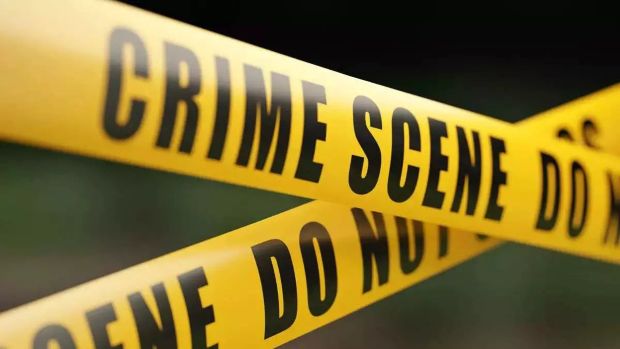By Hana Ibrahim
In what should be a peaceful island still recovering from decades of conflict, a new kind of violence is spreading fear – one punctuated by the sound of gunfire. Over the past six months alone, Sri Lanka has witnessed at least 60 shooting incidents, claiming 34 lives and injuring dozens more. The rise in gun violence, particularly linked to organized crime, poses not just a serious law-and-order challenge but also a grave social crisis. With each bullet fired, public confidence in the state’s ability to protect its citizens erodes further.
According to data from the Police Divisional Office, 44 of the 60 reported shootings have connections to underworld gangs. These are not isolated incidents—they are part of a growing pattern of brazen, organized attacks across urban and semi-urban areas. The start of July saw three more such shootings within just days, including a deadly hit near the Kandana Police Station, a dramatic police chase gone wrong in Dungalpitiya, and an execution-style killing in Ragama. These events are no longer shocking outliers—they are part of a disturbing new norm.
Perhaps the most high-profile of these was the July 1 attack targeting Sameera Manohara, also known as ‘Weli Sameera,’ a former personal secretary to the late Minister Mangala Samaraweera. Gunmen opened fire at close range on a vehicle near the Kandana Police Station, killing Sameera’s cousin and critically injuring him. This chilling assault executed steps away from a law enforcement facility, sent a clear message: the underworld is not afraid. It operates with impunity—and perhaps, with inside help.
On the same day, further north in Dungalpitiya, police opened fire on two men riding a motorcycle after they failed to stop at a checkpoint. Suspected of transporting drugs, the riders collided with a lorry during the pursuit. One was hospitalized, the other was arrested. And the following night in Ragama, yet another man, Ami Upul—a known associate of underworld figure Ganemulla Sanjeewa—was shot and killed, suspected to be the latest in a string of targeted hits.
Then came the events of Kahawatta. On June 30, 22-year-old Imantha Suranjan was fatally shot, reportedly for providing information to police about local drug trafficking operations. During his funeral on July 3, tensions erupted into violence. Furious residents accused the police of enabling or even facilitating the murder. Stones were hurled, tear gas was fired, and a suspect’s three-wheeler was set ablaze. For the people of Kahawatta, the rage wasn’t just about Imantha’s death—it was about years of fear, silence, and perceived betrayal by those sworn to protect them.
This pattern of organized violence demands urgent and transparent action. At an average of nearly two shootings per week, Sri Lanka is witnessing the rise of gun culture in a manner unthinkable just a few years ago. The roots of this crisis lie in decades of political protection afforded to criminal elements, a compromised policing system, and the dangerous marriage between narcotics, firearms, and local-level corruption.
When the National People’s Power (NPP) government came to office, it did so with promises to root out crime and clean up the system. Their mandate was clear: break the back of organized criminal networks that had grown fat under successive governments. Yet six months in, the bodies are still falling, and the promises are still pending. Each new shooting chips away at the credibility of those in power.
There is a growing perception that parts of the law enforcement system are compromised. This perception, whether accurate or not, is corrosive to the social contract between citizens and the state. It fosters mistrust, vigilantism, and apathy. Without serious reform and immediate, demonstrable action, Sri Lanka risks sliding into a permanent state of low-intensity criminal conflict.
What is needed now is more than just press briefings and political rhetoric. The government must establish a high-powered, independent task force—comprising clean officers, former prosecutors, intelligence experts, and civil society observers—to investigate the roots and networks of gun crime. Simultaneously, a digital registry of firearms, improved border controls, and stricter penalties for illegal weapons possession must be implemented.
Community policing must be revitalized. People must feel safe to report crimes without fear of reprisal. Whistleblower protections, anonymous hotlines, and independent oversight can rebuild some of the lost trust between citizens and police. But these reforms must be more than cosmetic. Sri Lanka cannot afford another cycle of violence begetting fear, fear begetting silence, and silence emboldening criminals.
Furthermore, tackling organized crime means addressing the broader ecosystem that enables it. This includes the political patronage that shields gang leaders, the drug money that flows through unchecked financial systems, and the social inequality that drives youth into criminal networks. The solution is not just law enforcement—it is economic, political, and societal.
Sri Lanka has the tools. It has a well-trained police force, sophisticated intelligence services, and a resilient, aware public. What is lacking is the political will to clean house. If this violence continues unchecked, the country will not only see more blood on its streets—it will see a democracy gradually undermined by fear.
The growing toll of gun violence is more than a statistic. Behind each number is a life lost, a family broken, a community shaken. We must ask ourselves: how many more funerals will it take before we reclaim the peace our people deserve?
-ENCL



Comments are closed, but trackbacks and pingbacks are open.